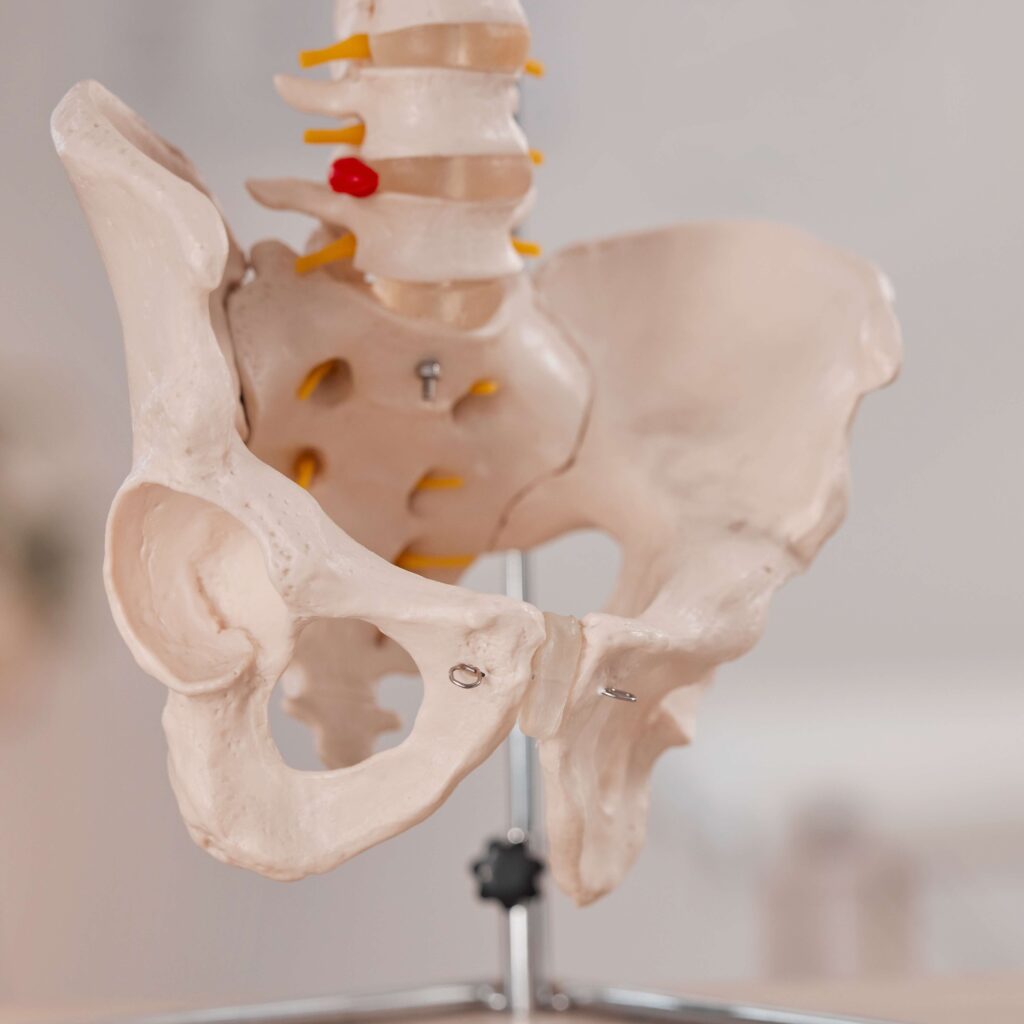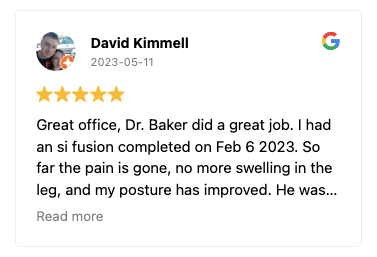What is Stage 4 Sciatica?

Understanding Sciatica and Its Impact
Sciatica occurs when the sciatic nerve, the largest nerve in the body, becomes compressed or irritated. This nerve originates in the lower back and extends through the hips, buttocks, and down each leg. When the sciatic nerve is affected, it leads to sciatica pain, which often begins in the lower back and radiates down one side of the body. The intensity of the pain can range from mild discomfort to severe pain that impacts daily activities.
Progression Through the Stages of Sciatica
Sciatica progresses in severity, classified into various stages. By the time patients reach stage 4 sciatica, they face the most severe form of the condition, often involving chronic sciatica symptoms.
Early stages may be managed with conservative treatments, but at stage 4, the pain and associated symptoms become difficult to control. Recognizing the signs early in the stages of sciatica can help prevent the condition from worsening.

Common Symptoms of Sciatica
Common sciatica symptoms include sharp pain, tingling, and numbness, which typically affect the lower extremities. These symptoms stem from nerve compression, particularly when the sciatic nerve is pinched due to underlying conditions like degenerative disc disease or a herniated disc. In more advanced cases, issues involving the spinal cord or sciatic nerve compression can lead to worsening pain and immobility.
Approaches to Managing Sciatica
Managing acute sciatica often involves treatments such as physical therapy, designed to relieve pain and improve mobility. However, in stage 4, patients might require more intensive treatment options, especially if conservative methods fail to control the severe sciatica symptoms. Early intervention can significantly improve outcomes, preventing chronic sciatica and reducing the need for surgical intervention.
The Severity of Stage 4 Sciatica
Stage 4 sciatica represents the most advanced and debilitating phase of the condition. Patients experiencing pain at this stage often describe it as excruciating and constant, severely affecting their ability to carry out daily tasks.
The pain often radiates from the lower spine down to the legs, causing not only discomfort but also significant leg weakness. Many patients report a burning sensation in the affected leg, which can further reduce mobility and quality of life.
Causes of Stage 4 Sciatica
The primary cause of stage 4 sciatica is severe nerve compression, which can be triggered by several factors. Conditions such as bone spurs, herniated discs, and piriformis syndrome can all contribute to the compression of the sciatic nerve. As the condition progresses, patients may experience worsened symptoms, including increased pain signals that become difficult to manage without intervention.
When Surgical Treatment Becomes Necessary
For many patients at stage 4, conservative treatments like physical therapy may no longer be sufficient to manage sciatica. In these cases, a healthcare professional may recommend surgical treatment to reduce nerve compression and relieve symptoms. Surgery often focuses on addressing the root cause of the sciatica, whether that involves removing bone spurs or correcting a herniated disc. While surgery can be highly effective, it is typically considered only after other methods have failed.
The Path to Healing Sciatica
Despite the severity of stage 4 sciatica, it’s important to recognize that the healing process is still possible. Surgical interventions, combined with post-operative care and physical therapy, can aid in the recovery journey. Many patients report improvements in mobility and pain reduction as they progress through their healing process, although full recovery can take time.
Understanding the Sciatic Nerve
The Role of the Sciatic Nerve in Sciatica
The sciatic nerve is the largest nerve in the body, originating from the lumbar spine and running down through the hips, buttocks, and legs. When this nerve becomes compressed or irritated, it leads to sciatic nerve pain, a hallmark symptom of sciatica. The pain often extends from the lower back down to the leg, sometimes causing muscle weakness and leg pain.
Nerve Compression and Its Causes
Several conditions can lead to sciatic nerve compression. One of the most common causes is degenerative disc disease, a condition in which the discs between the vertebrae deteriorate, reducing the space for nerves to pass through. This can cause pressure on the nerve roots, resulting in excruciating pain. Similarly, spinal stenosis, a narrowing of the spinal canal, can compress the nerve roots, further aggravating the sciatic nerve.
Treating Sciatica Through Physical Therapy
Treating sciatica at any stage often begins with conservative approaches, such as physical therapy exercises.
A physical therapist can guide patients through exercises designed to strengthen the muscles around the spine, which can help relieve nerve compression and reduce nerve pain.
In some cases, you can work with Injury Rehabilitation Personal Trainer in Dubai or Dallas to gently guide you back to fitness.
While physical therapy is effective for many, more severe cases may require additional interventions.
Advanced Treatment Options for Severe Sciatica
In cases where sciatic nerve compression is severe and conservative treatments fail, other options must be considered. Epidural steroid injections are commonly used to reduce nerve inflammation and provide temporary relief from pain. For patients with persistent symptoms or nerve damage, surgical procedures like spinal fusion may be necessary to address the underlying cause of the condition. Surgery aims to relieve pressure on the nerve roots, often resulting in significant pain relief and improved function.
The Four Stages of Sciatica
Progression Through the Stages of Sciatica
Sciatica progresses through distinct phases, each with increasing levels of sciatica pain and disability. The condition can start as mild discomfort and escalate into chronic sciatica, where patients suffer from constant pain that limits their daily activities. Understanding the progression through the stages of sciatica is crucial in determining the most effective treatment options before the condition worsens.
Stage 1: Early Signs of Sciatica
In the initial stage, sciatica may cause intermittent sciatic pain, often manifesting as shooting pain from the lower spine down through the affected leg. This stage can be triggered by conditions like a herniated disc or spinal stenosis, both of which compress the sciatic nerve.
Early sciatica symptoms typically include occasional leg pain, tingling, and discomfort in the hip or buttock area. At this stage, many patients find relief through physical therapy exercises and lifestyle modifications aimed to reduce nerve compression.
Stage 2: Moderate Sciatica Symptoms
As the condition progresses, sciatic nerve pain intensifies, and patients may experience more frequent flare-ups. Symptoms include muscle weakness, nerve pain, and persistent discomfort in the lumbar spine.
The pain is often exacerbated by prolonged sitting or sudden movements. This stage is also characterized by muscle spasms and increased difficulty with mobility. If untreated, conditions like lumbar spinal stenosis or herniated discs may worsen, leading to more intense symptoms.
Stage 3: Chronic Sciatica
In stage 3, patients may start to experience chronic sciatica symptoms, including severe pain that radiates from the spinal cord to the affected leg. The pain signals in this phase become constant, and some individuals may develop a limp due to nerve damage or weakness. Pain relief may become more difficult to achieve with over-the-counter pain relievers, and stronger medications or muscle relaxants may be prescribed to help manage the discomfort. Additionally, nerve rehabilitation techniques, guided by a physical therapist, aim to restore mobility and reduce pain.
Stage 4: Advanced Sciatica
At stage 4, sciatica has reached its most severe form, with patients facing constant pain and significant limitations in mobility. This stage often involves severe nerve root compression due to herniated discs, lumbar spinal stenosis, or other underlying conditions.
Surgical treatments such as spinal fusion or nerve blocks may be required to alleviate the pressure on the sciatica nerve. Patients at this stage often require intensive pain management strategies, including nonsteroidal anti-inflammatory drugs (NSAIDs), alternative therapies, or even consultations with a pain specialist to create a comprehensive treatment plan. Despite the severity, with appropriate intervention, many patients can work toward a pain-free life.
Sciatica Pain: Symptoms in Stage 4
The Intensity of Sciatica Pain in Stage 4
In stage 4 sciatica, pain peaks. Patients endure chronic sciatica, where sciatic pain becomes persistent and severe, radiating from the spinal cord down to the legs. Unlike acute sciatica, which comes and goes, chronic cases result in constant discomfort and often debilitating leg pain. The sciatica nerve becomes compressed, leading to tingling, numbness, and difficulty walking.
Common Symptoms of Advanced Sciatica
Patients with stage 4 sciatica suffer from intense symptoms, including severe hip pain and nerve root irritation. The pain worsens with sitting, standing for long periods, or sudden movements. Along with leg pain, individuals may experience reduced mobility, making simple tasks challenging. These symptoms are typically caused by spinal stenosis or nerve compression, common at this stage.
Causes of Stage 4 Sciatica
Identifying the Underlying Cause
The most common cause of stage 4 sciatica is nerve root compression, often from spinal stenosis or a herniated disc. In these conditions, the sciatica nerve is pinched, leading to chronic discomfort.
Additionally, bone spurs and other degenerative spinal issues can worsen compression, making pain harder to alleviate. Understanding the causes helps determine the most effective treatment plan.
Managing Sciatica and Treatment Options
Treatment Options for Stage 4 Sciatica
When it comes to managing sciatica, especially in its most severe form, a personalized treatment plan is essential. For patients in stage 4, common approaches include a combination of pain management strategies and physical therapy.
Sciatica treatment often begins with conservative measures like pain relievers, physical therapy, and lifestyle adjustments designed to reduce strain on the sciatica nerve. A pain specialist may also recommend epidural steroid injections or nerve blocks to provide temporary relief from pain and alleviate symptoms.
If conservative treatments fail to improve symptoms and the pain persists, surgical intervention may be necessary. Procedures such as spinal decompression or fusion aim to alleviate symptoms by addressing the underlying cause of the condition, whether that’s a herniated disc or spinal stenosis. Post-surgery, patients work closely with healthcare professionals to rehabilitate the nerve and regain mobility.
Creating a Pain-Free Future
While stage 4 sciatica is challenging, with the right combination of treatments, many patients can significantly reduce their symptoms and work toward a pain-free life.
Consistent physical therapy, combined with effective pain management, can help patients regain their quality of life. Early intervention, even at earlier stages of sciatica, is key to prevent sciatica from progressing to such an advanced stage.
It’s easy to dismiss sciatica as just another type of back pain—until you or someone close to you experiences its reality.
The journey from stage 1 to stage 4 can feel gradual for some, sudden for others, but the relentless progression is undeniable if left untreated. Each stage of sciatica presents unique challenges, but stage 4 is when the condition truly shows its debilitating potential.
At this advanced stage, sciatica pain is at its worst, making everyday tasks—like standing, walking, or even sitting—feel insurmountable.
Living with Stage 4 Sciatica: A Daily Struggle
For those living with stage 4 sciatica, pain becomes a constant companion. What may begin as a dull ache or sharp shooting pain in the lower back eventually radiates down the legs, causing leg weakness, numbness, and an unrelenting burning sensation.
This is not the kind of pain that vanishes with rest or even strong over-the-counter pain relievers. It invades every moment, disrupting sleep and reducing quality of life. Many describe it as excruciating pain, a force that interferes with even the simplest of daily activities. For many, the toll isn’t just physical; it’s emotional, too—leading to frustration, anxiety, and even depression.
By this point, seeking pain relief isn’t merely about comfort; it’s about regaining control of your life. But recovery from stage 4 sciatica is neither quick nor simple. Managing chronic sciatica requires a combination of medical treatments, lifestyle changes, and long-term care plans to keep the pain in check.
The Importance of Early Detection and Treatment
A key takeaway from understanding sciatica’s progression is the importance of early intervention. Recognizing signs like mild nerve compression, tingling, or muscle weakness can dramatically alter the course of the condition.
Those who seek professional advice and incorporate physical therapy exercises early on often avoid the severe symptoms that define stage 4 sciatica.
Many people ignore the early signs, brushing off back pain as something common, blaming a poor night’s sleep or long hours at work. However, as sciatica advances, the pain intensifies, spreading down the legs.
Soon, a dull ache evolves into a chronic condition, and everyday activities like walking or standing become unbearable. Ignoring these early signs is a mistake, as what starts as manageable pain can quickly spiral into something much more debilitating.
That’s why it’s crucial to listen to your body. Early-stage sciatica is often manageable with a blend of physical therapy, rest, and medication, helping to reduce nerve compression before it worsens. But once the condition reaches stage 4, pain management becomes far more difficult, often requiring more invasive procedures, including surgery.
Understanding When Surgery is Necessary
By the time sciatica has reached stage 4, conservative treatments—like physical therapy and medications—sometimes no longer provide adequate relief. For many, surgery becomes a real consideration.
Though usually a last resort, surgical interventions can be life-changing for those struggling with constant pain and limited mobility. Procedures like spinal fusion, laminectomy, and discectomy are some options available to relieve pressure on the sciatic nerve and offer long-term relief.
Surgery does come with its risks, but for many patients, the decision to have surgery stems from necessity.
The pain has become so intense that daily life is no longer manageable. Surgical intervention offers a chance to address the underlying cause of the pain—whether that’s a herniated disc or bone spurs—and restore function.
However, surgery is just one step in the recovery process. Afterward, rehabilitation is essential. Patients must engage in physical therapy to rebuild strength, regain flexibility, and restore movement. Muscles around the spine need retraining to support proper posture, preventing a relapse into a cycle of pain. While surgery can offer immediate pain relief, the long-term success of the treatment often depends on how well patients adhere to their rehabilitation plan.
Lifestyle Adjustments for Long-Term Relief
Medical and surgical treatments are essential in addressing severe sciatica, but lifestyle adjustments play a critical role in preventing future flare-ups. Many patients find that incorporating simple changes into their daily routine can significantly lower the risk of sciatica returning or worsening after treatment.
Maintaining a healthy weight reduces pressure on the lower back, helping prevent nerve compression. Regular exercise, especially exercises that strengthen the core and back muscles, is vital. A strong core supports better posture, which reduces strain on the sciatic nerve.
Posture is also crucial. Whether sitting or lifting, proper body mechanics help prevent further nerve damage. Patients are advised to stay mindful of movement, using ergonomic supports and taking regular breaks.
Incorporating stretching and mobility exercises, particularly for the hips and lower back, improves flexibility, eases tension, and relieves pressure on the sciatic nerve. Additionally, alternative therapies like yoga, Pilates, and acupuncture provide extra support during recovery, offering pain relief and promoting well-being.
The Emotional Toll of Chronic Sciatica
While the physical symptoms of stage 4 sciatica are undeniable, the emotional toll of chronic pain shouldn't be overlooked.
Persistent pain profoundly affects mental health. The combination of physical discomfort and life limitations often leads to helplessness, frustration, and depression. Some patients may withdraw from activities, avoid exercise, or feel discouraged by slow recovery.
Addressing the emotional challenges of chronic sciatica is crucial. Therapy or counseling helps patients cope with the emotional strain of long-term pain. Many pain management programs incorporate mental health care, recognizing that recovery means treating both body and mind.
Looking Forward: A Path Toward a Pain-Free Life
Although stage 4 sciatica can seem overwhelming, it’s important to remember that there is hope for a pain-free life.
With the right combination of medical treatment, possible surgery, and lifestyle changes, many patients can significantly reduce their symptoms and regain control of their lives.
Recovery may take time, but with patience and the support of a dedicated medical team, it’s possible to find relief.
In the end, managing sciatica, particularly in its more advanced stages, requires a proactive approach.
Recognizing the signs, seeking treatment early, and staying committed to a comprehensive treatment plan can help patients avoid the most severe complications of the condition.
It’s about understanding your body, addressing the symptoms before they worsen, and building a foundation for long-term health and comfort.
Dr. Abdul Baker - An Expert Neurosurgeon in Texas
Every neurosurgery has its complications; thus, a patient must choose the best neurosurgeon for himself. Dr. Abdul Baker is one of the most experienced and qualified neurosurgeons in Texas, treating patients for more than 16 years. People in Sherman, Plano, and nearby areas trust him for every kind of neurosurgery due to his surgical procedures’ 100% success rate. You may visit him if you need any consultancy or treatment regarding your brain and spine disorders.


Dr. Baker specializes in neurosurgery, neurosurgical spine surgery, neurotrauma, brain tumors, spinal tumors, and peripheral nerve damage treatment.









